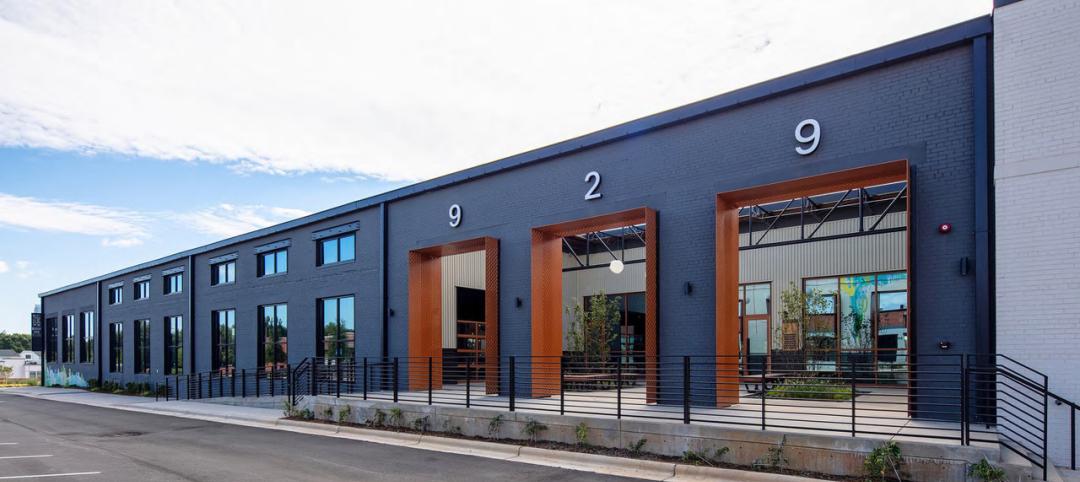An upturn in home-buying and commercial development is a boon for the construction industry, but the pressure to grow can squeeze construction companies grappling with cash flow, expenses and expansion.
— In April, privately-owned housing starts jumped 12.4%, to an annualized rate of 1.319 million units, according to the U.S. Census Bureau and U.S. Dept. of Housing and Urban Development.1
— Cost and availability of labor and developed lots, as well as building material prices, are the top problems builders expect to face this year, according to a recent survey of builders from the NAHB/Wells Fargo Housing Market Index.2
— Construction companies anticipate 5% growth in 2018, up from a strong 4% in 2017, according to a consensus forecast from Oldcastle Business Intelligence.3
You might think it takes a truckload of cash on hand to take advantage of growth in the sector, but here’s how seasoned operators meet the new demand for homes, offices and new locations without drowning in new expenses.

Lining Up New Suppliers in New Areas of Operations
Many construction firms are taking on out-of-state jobs as opportunities arise in regional rebuilding areas like Houston and California. But starting up in new markets is hard.
“When you go to a different area, you need to be able to establish a new set of vendors and that's very time-consuming,” said Ray, a vice president of operations for a large concrete company.
Financial partners can help firms quickly gain the trust of new vendors, no matter the market.
To quickly scale, out-of-towners have to establish credibility. A trusted third-party can help, say construction decision-makers. In particular, financial partners can help firms quickly gain the trust of new vendors, no matter the market.
When Ray needed a new concrete materials supplier in Texas, for example, he took advantage of the existing relationship he had with his business Credit Card financial representative to negotiate with the supplier he wanted to work with, which allowed him to get the materials he needed quickly and at the best price possible.

Managing the Cash Crunch
As builders take on more projects to meet growing demand, it’s taking longer to complete construction jobs. There’s simply not enough construction workers or sub-contractors to get the job done on normal schedules.
“We'd love to build a home in 90 days but in reality, it's taking 130,” said William, a small home builder that does about $40 million a year in revenue. “We accept that and budget for it. As much as we want to build a home in 90 days, it's just not happening.”
Longer timelines mean builders get paid later. Managing cash flow for extended timelines delays your payments to builders. It can turn into a juggling act, particularly when you’re looking to start a new job while previous projects are winding down.
Using a business Credit Card for purchases or materials generates rewards savings that can help defray additional expenses.
To help manage the cash flow crunch, general contractors say they are increasingly working with financial partners that can build custom solutions for their firms. These partners play a helpful role by fully understanding the company’s business needs and helping to ensure their lines of credit are sufficient to allow them to make needed purchases, as well as providing the flexibility they need to jump on demand for new projects.
“Usually it's getting materials for a new job that’s starting up,” said Hal, a vice president of a mid-size building construction contractor. “We may need to purchase specially-ordered materials that are expensive and end up in a catch-22 because we can’t bill for them, but we need them to prepare for the job.”
Having a dedicated financial partner can help contractors and builders avoid the juggling act by developing custom financial programs and solutions. Also, using a business Credit Card for purchases of materials or other items generates rewards savings that can help defray additional expenses due to project delays.

Cards Instead of Cash on the Job Site
Keeping track of expenditures on the jobsite is key to managing cash flow. That challenge becomes even more acute as builders and developers take on projects outside of their normal territories.
Keeping track of expenditures on the jobsite is key to managing cash flow.
Jake, director of operations at a general contractor for commercial construction projects, said his firm has a good idea of what his sub-contractors are going to buy because they get approval from his firm first. But there are always workers on site who need to make purchases.
“Having clear visibility into what are our superintendents’ unexpected expenditures are is really important for our business,” Jake said.
1U.S. Census: Monthly New Residentail Construction, April 2018
2Eye on Housing: Building Materials Prices and Labor Access Top Challenges for 2018
Related Stories
Giants 400 | Nov 28, 2023
Top 55 Laboratory Construction Firms for 2023
Whiting-Turner, DPR Construction, STO Building Group, Skanska, and Hensel Phelps top BD+C's ranking of the nation's largest laboratory general contractors and construction management (CM) firms for 2023, as reported in Building Design+Construction's 2023 Giants 400 Report.
Contractors | Nov 28, 2023
Swinerton’s special projects units allow the national GC to operate like a local boutique firm
Swinerton’s Carolinas Division has been particularly successful in attracting jobs that require a nimble touch.
Engineers | Nov 27, 2023
Kimley-Horn eliminates the guesswork of electric vehicle charger site selection
Private businesses and governments can now choose their new electric vehicle (EV) charger locations with data-driven precision. Kimley-Horn, the national engineering, planning, and design consulting firm, today launched TREDLite EV, a cloud-based tool that helps organizations develop and optimize their EV charger deployment strategies based on the organization’s unique priorities.
Market Data | Nov 27, 2023
Number of employees returning to the office varies significantly by city
While the return-to-the-office trend is felt across the country, the percentage of employees moving back to their offices varies significantly according to geography, according to Eptura’s Q3 Workplace Index.
Resiliency | Nov 27, 2023
All levels of government need to act to cope with climate-driven flooding and sea level rise
The latest National Climate Assessment highlights the need for local, state, and federal governments to adopt policies to mitigate the effects of climate-driven flooding and sea level rise, according to a policy expert with the National Resources Defense Council.
Contractors | Nov 27, 2023
A Minnesota GC offers workers Wellness Pods as a mental health option
A maternal need sparked this idea for Gardner Builders.
Cultural Facilities | Nov 21, 2023
Arizona’s Water Education Center will teach visitors about water conservation and reuse strategies
Phoenix-based architecture firm Jones Studio will design the Water Education Center for Central Arizona Project (CAP)—a 336-mile aqueduct system that delivers Colorado River water to almost 6 million people, more than 80% of the state’s population. The Center will allow the public to explore CAP’s history, operations, and impact on Arizona.
MFPRO+ News | Nov 21, 2023
California building electrification laws could prompt more evictions and rent increases
California laws requiring apartment owners to ditch appliances that use fossil fuels could prompt more evictions and rent increases in the state, according to a report from the nonprofit Strategic Actions for a Just Economy. The law could spur more evictions if landlords undertake major renovations to comply with the electrification rule.
Codes and Standards | Nov 21, 2023
Austin becomes largest U.S. city to waive minimum parking requirements
Austin, Texas recently became the largest city in the United States to stop requiring new developments to set a minimum amount of parking. The Austin City Council voted 8-2 earlier this month to eliminate parking requirements in an effort to fight climate change and spur more housing construction as Texas’s capitol grapples with a housing affordability crisis.
MFPRO+ News | Nov 21, 2023
Underused strip malls offer great potential for conversions to residential use
Replacing moribund strip malls with multifamily housing could make a notable dent in the housing shortage and revitalize under-used properties across the country, according to a report from housing nonprofit Enterprise Community Partners.

















